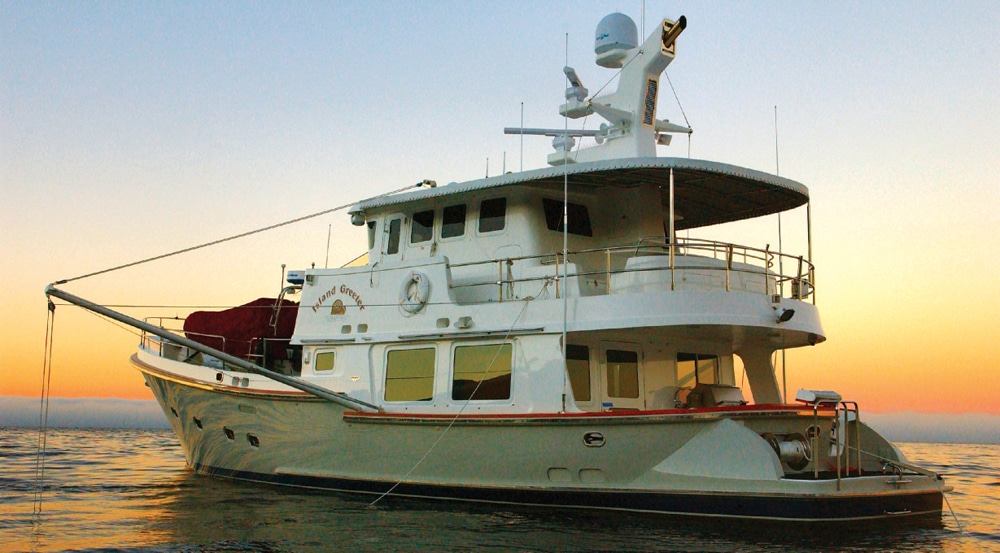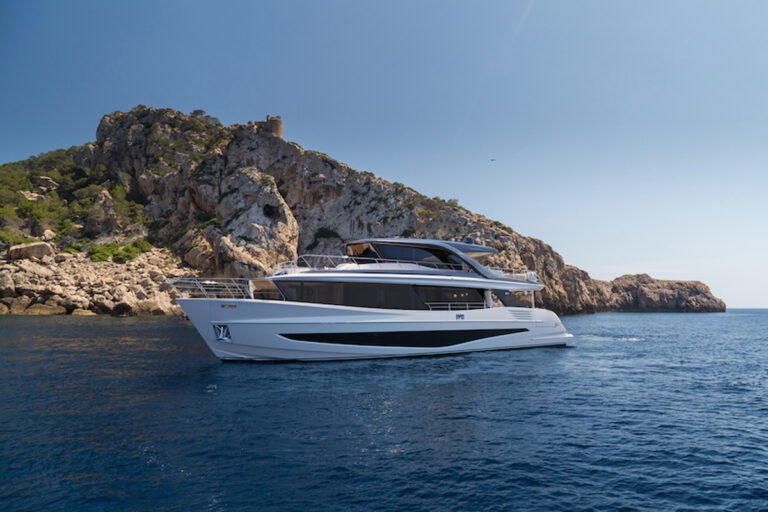
Motion-control Solutions
One of my favorite cartoons shows a stormy sea with Noah’s ark heeled precariously to one side. Noah, high on the windward rail opposite a pitifully pale pair of puking pachyderms, shouts to his sons, “Blast! The elephants are seasick again.” If a ship planned by God Almighty had rolling and pitching problems, it’s a safe bet that your yacht does too, designed as it is by mere mortals — the self-images of certain yacht designers notwithstanding.
The good news is that, unlike Noah, you have access to a wide variety of motion-control solutions to take much of the rock and roll out of cruising. These solutions fall into two general categories: roll control and trim control. The roll-control category includes bilge keels, active fin stabilizers, gyroscopic stabilizers, paravanes and flume tanks. The trim-control category includes trim tabs, submerged foils, invaders, interceptors and fixed wedges, as well as trimmable outboards, outdrives and surface drives.
In addition, modern computerized monitoring and control systems are capable of coordinating two or more of these devices, as well as the rudders, to quell both roll and pitch. These integrated systems offer some of the best motion control available today, but the cost can be substantial, so at the moment, they’re generally found only on superyachts and specialty craft.
Bilge keels are long, fixed appendages located at the turn of the bilge on round-hulled displacement vessels. They’re passive devices that don’t cost much, but they don’t do much either. Also passive are paravanes, commonly known as flopper-stoppers. These resemble weighted delta wings, hung from cables or chains and “flown” underwater at the end of long outriggers port and starboard. Because they impose substantial loads onto the deck and house structure, they require a rather stout rig that some find objectionable. Another downside is that they’re usable and effective only within a certain range of sea states. Off-the-shelf paravanes are sold through many marine outlets for smaller boats, with instructions to hang them from cleats at the stern or amidships. While these provide some roll-damping at anchor, most are not intended for use under way. These, too, can impose substantial loads, so make sure your cleats are through-bolted and have backing plates.
A third passive device, once common on passenger ships and now being seriously reconsidered for superyachts, is the flume tank. Built into the hull structure at the time of construction, it consists of two vertical tanks, one port and one starboard, similar to fuel tanks, cross-connected by a large pipe or athwartship duct built into the double bottom. The tanks are partially filled with water and “tuned” by a valve so that the water sloshes from side to side, out of phase with the rolling, and thus cancels some of the motion.
Among the most popular, reliable and effective options are active fin stabilizers. These have one or more pairs of symmetrical foils or fins that extend from the hull, with hydraulic or pneumatic actuators inside the hull that operate automatically. They work at anchor as well as under way.
Another active device is the gyroscopic stabilizer. It’s essentially a massive metal wheel spinning at high speed, but unlike fin stabilizers, it has the advantage of being mounted entirely inside the hull.
Next month, we’ll take a more in-depth look at fins and gyros, with an emphasis on stabilization at anchor. The following month, we’ll address trim control and advanced motion-control systems.
Check out Part 2 & 3 of our ride-control series.









